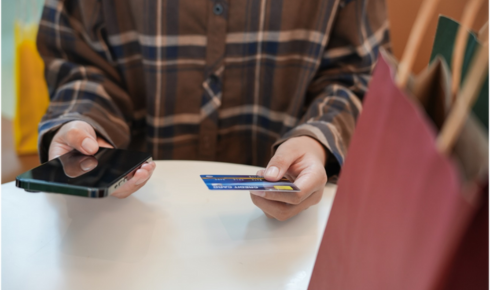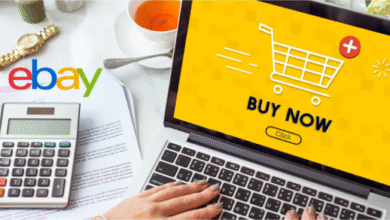
- Setting the Stage: Why This Balance Matters
In the fast-moving world of digital finance, convenience is king—until something goes wrong. With mobile payments becoming a preferred transaction method for millions, balancing ease of use with robust security has emerged as a central issue. Consumers expect to pay in seconds, but they also demand protection from fraud, data leaks, and misuse. Striking the right balance between security and convenience isn’t just a technical matter—it’s shaping how micropayment services evolve in 2025 and beyond.
One essential factor drawing attention is 소액결제 현금화 방법, the technique of converting micropayments into cash. As this practice gains traction, the security of each transaction becomes even more critical, particularly in services where volume is high and value is low.
- Breaking Down the Basics: Key Terms You Should Know
| Term | Explanation |
| Micropayment | A small transaction, often below $5, typically used in digital goods or in-app purchases. |
| Mobile Payment | Any transaction made via a smartphone or mobile-enabled device, often using NFC, QR codes, or mobile wallets. |
| Security–Convenience Trade-off | The balance between system safeguards (e.g., 2FA, encryption) and ease of user access (e.g., one-tap pay). |
| Cash-Out Method | The process of converting digital credits or payments into usable real-world cash. |
- How the Micropayment Landscape Has Shifted
Micropayments used to be limited to ringtones and game tokens. Today, they’re used for articles, parking fees, streaming snippets, or even one-time digital consulting tips. With mobile wallets and super apps dominating in regions like South Korea, Japan, and China, the micropayment market is exploding.
- Step-by-Step Guide: Balancing Simplicity with Safety
| Step | Action | Objective |
| 1 | User authentication (biometric or passcode) | Verifies user identity |
| 2 | Tokenized transaction request | Prevents data leakage |
| 3 | Backend risk assessment (AI/ML) | Flags suspicious patterns |
| 4 | Transaction confirmation with time-limited link | Blocks replay attacks |
| 5 | Receipt logging and real-time user notification | Boosts user trust |
- The Big Trade-Off: What You Gain and Lose
| Aspect | Convenience-Oriented Design | Security-Focused Design |
| User Experience | Fast, frictionless, often one-click | Multiple steps, slower flow |
| Vulnerability | More prone to phishing or spoofing | Hardened systems, but user fatigue possible |
| Adoption Rate | High among casual users | Preferred by privacy-conscious users |
| Regulatory Fit | May need adaptation | Often built with compliance in mind |
- Frequently Asked Questions (FAQs)
Q1: Is one-tap mobile payment safe for repeated use?
A: Only if it uses tokenized credentials, biometric login, and transaction limits.
Q2: Why do some apps log me out automatically?
A: It’s a security feature to prevent unauthorized access, especially on shared or lost devices.
Q3: Is biometric login safer than passwords?
A: Yes, especially when combined with device-bound encryption. But biometric data, once leaked, is permanent.
Q4: How do I know if a micropayment app is secure?
A: Look for end-to-end encryption, transaction history, fraud alerts, and financial certifications (e.g., PCI-DSS compliance).
- Smart Strategy Tips: How to Stay Safe Without Getting Slowed Down
- Use a trusted mobile wallet with verified certifications (e.g., Apple Pay, Samsung Pay, or ZeroPayBank if operating locally).
- Enable multi-factor authentication—biometrics + device confirmation is better than one alone.
- Avoid public Wi-Fi when performing payments; use VPN if necessary.
- Set up transaction limits in your wallet to minimize risk if your phone is lost.
- Always update your apps—most updates include critical security patches.
- Real-World Case Study: South Korea’s ZeroPay System
ZeroPay is a fee-free mobile payment platform designed to support small businesses and encourage digital transactions. By eliminating commission fees and promoting QR-based payments, it became a household name. However, as adoption surged, ensuring both speed and security became essential—especially for small-value, high-frequency payments. Here’s how they handled it:
| Feature | Security Tactic Used | Effect |
| QR-based payments | Limited dynamic code expiration | Reduces spoofing risk |
| Business registration linkage | Prevents fake vendor profiles | Builds consumer trust |
| Real-time alerts | Tracks micro-fraud patterns | Enhances fraud detection accuracy |
- Challenges That Still Remain
- User fatigue from repetitive security checks can reduce satisfaction.
- Merchant resistance due to integration costs or lack of awareness.
- Fragmentation across systems, especially for cross-border payments.
- Lack of education around safe cash-out practices, which can expose users to scams.
- Solutions to Keep Both Worlds in Sync
- Adaptive authentication: Only challenge the user more when risk is detected.
- Behavioral biometrics: Typing speed, swipe patterns, and device angles offer silent security.
- Federated identity systems: Shared secure login systems for multiple platforms reduce burden.
- Education & UI nudges: Small reminders like “secure payment activated” can reassure users without annoying them.
- Expert Tips for Casual Users
- Don’t ignore update alerts; they often fix urgent security holes.
- Never store payment screenshots on your gallery—use secure folders or vaults.
- If something feels off (like strange delays), cancel and reattempt in a different app.
- Concluding Thoughts: Toward a Smarter Payment Future
The era of mobile payments is no longer on the horizon—it’s here. As more people integrate digital finance into their daily lives, the importance of designing systems that are both secure and simple becomes undeniable. Trends show that users aren’t willing to compromise on either. And with evolving models like ZeroPay and other domestic players focusing on QR-based or NFC-based micropayments, the ecosystem is shifting rapidly.
Finding that sweet spot where users feel safe and stay engaged is not just a design challenge—it’s a competitive advantage. And the more we refine the 현금화 절차, the better equipped we are to serve users who need speed, trust, and control.





